Photography by Paul Hundley
ERIN, WISCONSIN — The patio outside the clubhouse overlooking Erin Hills provides the best view of the magnificent venue that will host the 2017 U.S. Open.
It’s all right there.
The rolling terrain, sculpted long ago by glaciers that cut through the property’s 652 acres nestled in the middle of the picturesque Kettle Moraine region.
The long, golden fescue, nurtured over the last 10 years to shape many of the holes with a rustic variety of golden browns over the course of a golf season.
The prominent putting surfaces, most of them sitting above fairways, as if 18 indi- vidual stages waiting to entertain the game’s very best golfers.
In fact, a person can see just about everything from up there — everything, that is, except the future.
“One of the things that’s always fun when you haven’t held a championship for the game’s very best players, especially the professionals, you don’t know what type of player the course might favor,” said John Morrissett, competitions director for Erin Hills.
Will it favor a power-hitter such as Dustin Johnson? The reigning U.S. Open champion has the distance to overpower Erin Hills — even if the United States Golf Association, which conducts the event, were to stretch the course to its 7,820-yard tips or beyond. DJ would become the first repeat champion since Curtis Strange in 1989.
“Or, because of the difficulty of the bunkering and the native areas, does it favor the shorter hitter?” Morrissett asked rhetorically.
Those are just some of the questions Morrissett and others associated with Erin Hills, located 35 miles northwest of downtown Milwaukee, hope to have answered with a reverence and respect typically reserved for the game’s classic courses.
What will Rory McIlroy think of the place? Or how about the always-opinionated Phil Mickelson?
Will someone like Jordan Spieth, who played Erin Hills during the 2011 U.S. Amateur, still appreciate the variety of tee and hole locations that can alter the way Erin Hills plays from one day to the next?
Or will someone like Jason Day notice what Morrissett calls “the flow” of the course, especially that nine-hole stretch in the middle of their round in which golfers will never play two consecutive holes in the same direction?
“For those who haven’t been here before … it will be an interesting look and feel,” Morrissett said. “As (executive director) Mike Davis of the USGA once described it, it’s like Shinnecock Hills on steroids. … It’s going to be fun to see who plays well here.”
At the same time, there is a strong business-like approach between the Erin Hills staff and the USGA in the responsibility of staging a successful championship.
“It’s a tremendous honor,” said Morrissett, who himself is a former USGA Rules Department member. “To host the state’s first U.S. Open is beyond humbling. And it’s a responsibility we take very seriously.”

From a blind tee shot to a shallow green that is heavily bunkered to the right, the par-4 10th hole gives the back nine a tough starting hole. Photo by Paul Hundley.
A MAJOR BUZZ
The great detail that has gone into hosting the 2017 U.S. Open also went into the design of the golf course, which opened in 2006.
For example, the opening holes play to- ward the west and away from the rising sun while the finishing holes run toward the east with the setting sun behind the golfers. That foresight went into the design work of Michael Hurdzan and Dana Fry, who took a very simple approach to working with what the land had to offer.
They took pride in routing the course in and around the existing features glaciers created thousands of years ago. That so little earth was moved in construction of Erin Hills remains a marvel to those working with the finished product.
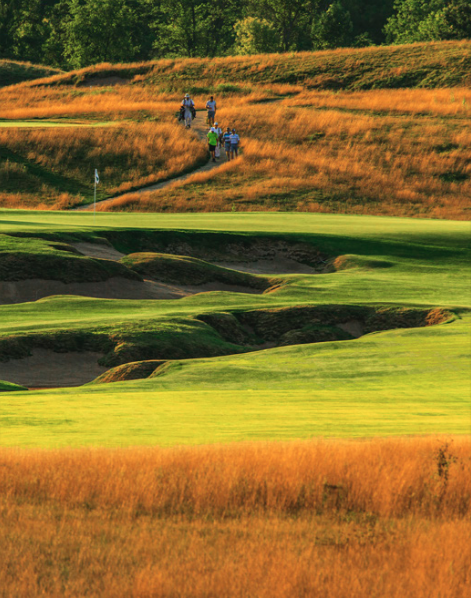
Photo by Paul Hundley.
“I like the rolling terrain,” said Darin Bevard, the director of championship agronomy for the USGA. “The Kettle Moraine type of rolls and movement is really unique.”
The USGA was intrigued about Erin Hills as a potential U.S. Open venue from the very moment its staff saw the property.
Jeff Hall, the USGA’s managing direc- tor of rules and open championships, was in that first USGA group to check out Erin Hills in 2007 while he was in Wisconsin on a site visit to Whistling Straits ahead of that year’s U.S. Senior Open. He walked the property with former owner Bob Lang, whose dream it was to bring a U.S. Open to Wisconsin, and Jim Hyler, the president of the USGA’s championship committee at the time.
“Mike Davis said ‘Hey, you need to go out and take a look at Erin Hills,’” Hall recalled. “I hadn’t been here previously. … We didn’t play; we just walked the golf course with Bob Lang. We’re like ‘Wow, this is pretty interesting.’
“Now, it’s obviously matured a good bit and some changes have been made. But I think what struck me the most the first time I saw it was the bigness of it.”
If it seemed big then, it only got bigger after the 2010 announcement that the USGA, which staged its U.S. Women’s Amateur Public Links Championship at Erin Hills in 2008, would stage its national championship at the facility in 2017.
“It’s been interesting,” Morrissett said. “With each season, as you get closer to the Open, people are more and more aware of the Open and the Open is playing more and more into their decision to come play here. … You can imagine, as a golfer, people are anxious to do that. It makes watching the Open, whether on television or in person, more enjoyable to have played the course yourself beforehand.”
To trigger the U.S. Open build-up, Erin Hills also hosted the 2011 U.S. Amateur Championship. It not only showcased Erin Hills as a major championship venue but also some of golf ’s emerging talent such as Jordan Spieth, Justin Thomas, Bryson Dechambeau, Patrick Rodgers, Patrick Cantlay and eventual champion Kelly Kraft.
In addition, Erin Hills has also opened its doors to state events. It played host to the 2014 Wisconsin State Amateur — won by University of Wisconsin golfer Eddie Wajda III with a 5-over-par 293 total — and the annual Marquette Intercollegiate each fall.
“What’s helpful from those events are the trends that you see,” Morrissett said. “For example, knowing that the fourth hole — even though on the scorecard it looks like a medium-length par-4 — most days, especially with a west wind, it plays as the hardest hole or close to the hardest hole. Information like that is useful to pass along to the USGA.”
Significant changes were made to the course around the time the USGA revealed its 2017 U.S. Open venue.
About eight months before the announcement, Lang’s efforts to land the U.S. Open proved to be too great of a financial burden and he was forced to sell the course. Andy Ziegler, the chairman of a Milwaukee asset management company, bought it in October of 2009 and initiated immediate changes.
Between the 2009 and 2010 golf seasons, more than 300 trees were removed from the property, according to Morrissett. That helped create more of a links-style feel to the course.
“It really opened up the property and let people appreciate more of what a cool piece of property it is,” Morrissett said. “Before, sometimes the trees hid or camouflaged the great glacial terrain.”
Improvements to the fairways and native grasses followed. With them, the club made the decision to become a walking-only course because, according to Morrissett, the fine fescue in the fairways “couldn’t handle the cart traffic,” from the daily play.
“Partly as a result of that and partly because of a very aggressive top-dressing pro- gram for the fairways, the fairways are now in much, much better condition,” Morrissett said. “And then, in terms of playability and aesthetics, what we call the native areas — the unmowed fescue — have just become much more uniform and aesthetically pleasing whereas, in 2010, they were still a hodgepodge of prairie weeds with some tall fescue.”
The golfing public, especially those golfers who played the course shortly after it opened in 2006, have noticed the changes. And applauded them.
“They can’t believe the differences — both in terms of how the course plays, but also the overall look and feel of the property as well,” Morrissett said. “Everything is just more mature. It’s a great compliment to hear some people say ‘When I heard the U.S. Open is coming here and I played here in 2007, I wondered. But, geez, you guys are ready.’ That’s a great compliment.”
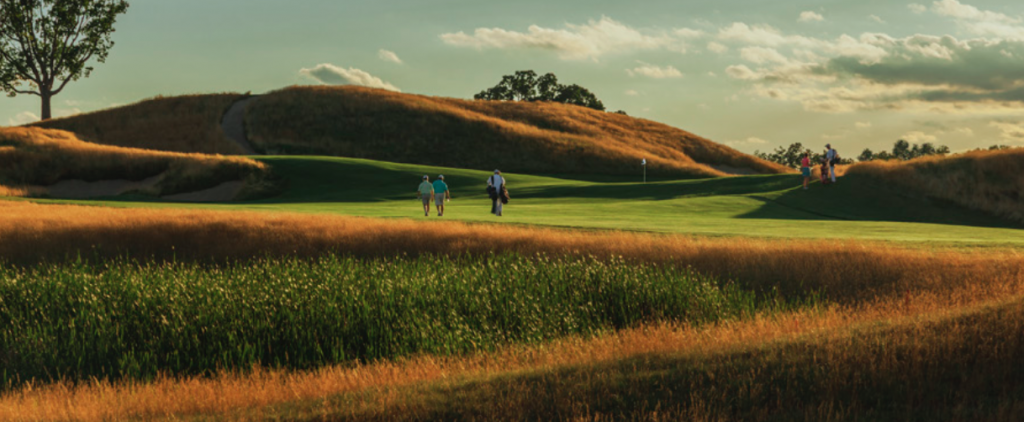
CLOSED TIL OPEN
As much buzz as there has been at Erin Hills leading up to the U.S. Open, there promises to be more after it is over.
That also happens to be the next time golfers will be able take on Erin Hills. In an unprecedented move, the course will remain closed to public play through the championship, giving superintendent Zach Reineking and the USGA agronomy staff the time and space to prepare the course for its major championship debut.
“That is a tremendous, tremendous benefit to us,” Bevard said. “This is going to be a great site in preparation for the Open because you don’t have to worry, come spring, about traffic on the golf course. You don’t have to worry about divots (or) ball marks.
“You don’t have to worry about Zach say- ing ‘Gosh, we have a full slate of tee times. We can’t do this on the golf course even though we’d like to do it.’”
Hall agreed. “It’s certainly a big plus,” he said. “It’s now in the hands of Mother Nature.” Indeed, perhaps the biggest challenge facing Erin Hills and the USGA is how the course comes out of the winter.
“Being this far north, your window coming out in the spring from the time the grass starts growing until the actual championship is shorter than it would be at a Pinehurst or a Pebble Beach,” said Bevard, noting that the USGA deals with varying degrees of turf- grass stress leading up to every U.S. Open.
“At Congressional Country Club (near Washington, D.C.) in 2011, they had the hot- test recorded temperatures ever in the month of June the week before the U.S. Open and then we had all the rain. This far north, we certainly don’t expect that to happen.”
What can golf fans expect of Erin Hills during U.S. Open week?
“We push the golf course to test these players; there’s not doubt about it,” Hall acknowledged. “Firm and fast. But we accept that responsibility.
“If we’re in control of the water, it will play how we want it to play. I think our attention to detail with respect to the presentation of
Erin Hills’ maintenance staff has spent the last 10 years creating a golden consistency to its familiar tall fescue grass off the fairways.
the golf course has really improved over the last decade. Some of that is the collaboration within the USGA and certainly the collaboration with our host venues. We’re working with them farther in advance just to make sure we’re on the same page, just so there is no misunderstanding that this is what we want to get to.
“And then (we) let our experts work with their experts on how to get there.”
Of course, there is another important component to the success of Erin Hills’ first U.S. Open: The spectator experience.
Officials expect about 35,000 fans per day during tournament week. They will have greater concerns than whether the greens roll at a 13 or 13 1/2 on the Stimpmeter.
“I know the golf course will be as good as it can be,” Morrissett said. “But you also want to make sure the 35,000 spectators who come here each day to have a good time. To make sure everything goes well from their perspective.
“From parking to admissions to concessions to grandstands and spectator flow. You want everyone to come away thinking ‘Wow, that was fantastic.’”
And when Morrissett says everyone, he means everyone.
“Our No. 1 goal is to make sure that there is a second U.S. Open at Erin Hills,” he said. “That everything goes so well here that there will be another one in the not-too-distant future.”
Please visit www.erinhills.com for more information or tickets.
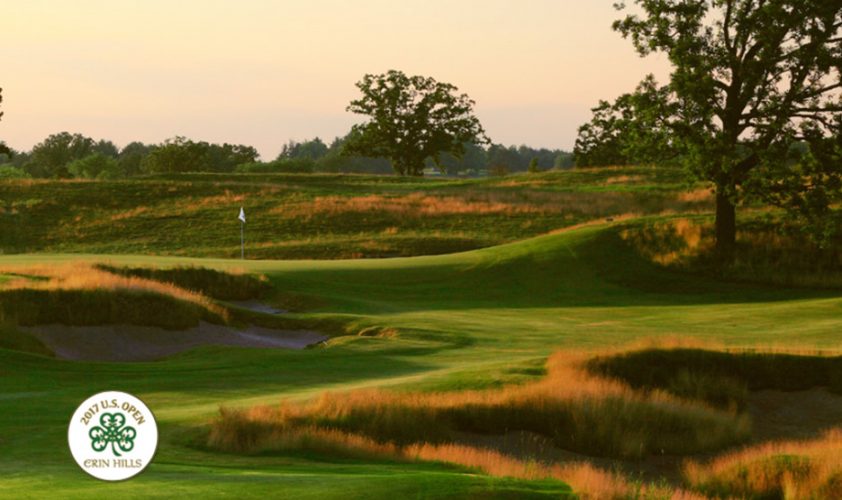
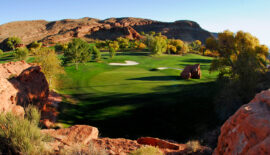 ';
';
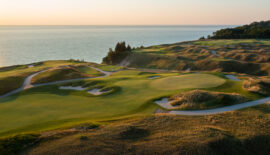 ';
';
 ';
';
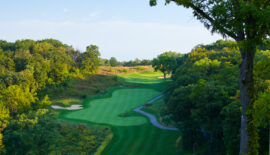 ';
';